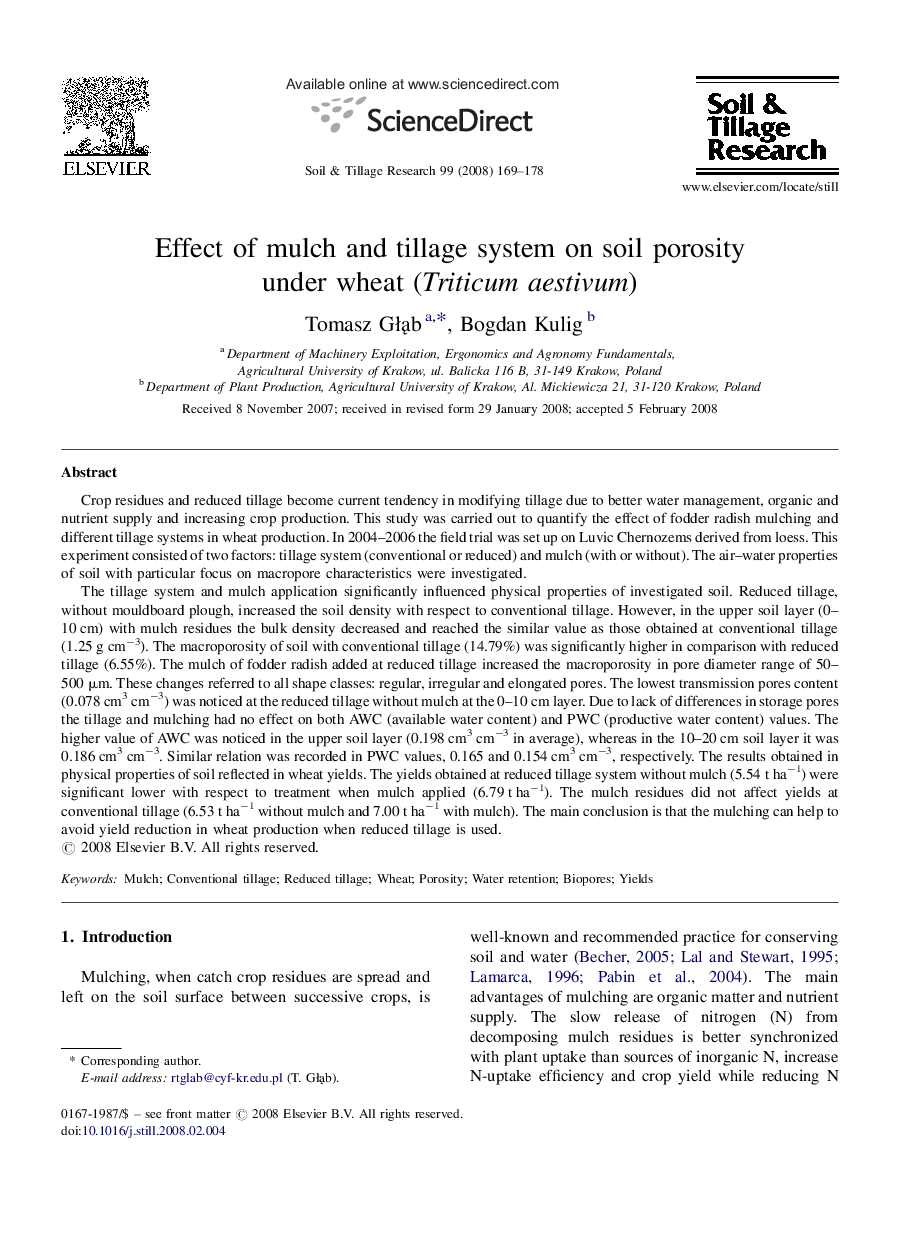| Article ID | Journal | Published Year | Pages | File Type |
|---|---|---|---|---|
| 306515 | Soil and Tillage Research | 2008 | 10 Pages |
Crop residues and reduced tillage become current tendency in modifying tillage due to better water management, organic and nutrient supply and increasing crop production. This study was carried out to quantify the effect of fodder radish mulching and different tillage systems in wheat production. In 2004–2006 the field trial was set up on Luvic Chernozems derived from loess. This experiment consisted of two factors: tillage system (conventional or reduced) and mulch (with or without). The air–water properties of soil with particular focus on macropore characteristics were investigated.The tillage system and mulch application significantly influenced physical properties of investigated soil. Reduced tillage, without mouldboard plough, increased the soil density with respect to conventional tillage. However, in the upper soil layer (0–10 cm) with mulch residues the bulk density decreased and reached the similar value as those obtained at conventional tillage (1.25 g cm−3). The macroporosity of soil with conventional tillage (14.79%) was significantly higher in comparison with reduced tillage (6.55%). The mulch of fodder radish added at reduced tillage increased the macroporosity in pore diameter range of 50–500 μm. These changes referred to all shape classes: regular, irregular and elongated pores. The lowest transmission pores content (0.078 cm3 cm−3) was noticed at the reduced tillage without mulch at the 0–10 cm layer. Due to lack of differences in storage pores the tillage and mulching had no effect on both AWC (available water content) and PWC (productive water content) values. The higher value of AWC was noticed in the upper soil layer (0.198 cm3 cm−3 in average), whereas in the 10–20 cm soil layer it was 0.186 cm3 cm−3. Similar relation was recorded in PWC values, 0.165 and 0.154 cm3 cm−3, respectively. The results obtained in physical properties of soil reflected in wheat yields. The yields obtained at reduced tillage system without mulch (5.54 t ha−1) were significant lower with respect to treatment when mulch applied (6.79 t ha−1). The mulch residues did not affect yields at conventional tillage (6.53 t ha−1 without mulch and 7.00 t ha−1 with mulch). The main conclusion is that the mulching can help to avoid yield reduction in wheat production when reduced tillage is used.
